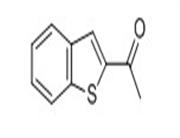| PAHs family |
Fluorene (FLU), dibenzofuran (DBF) and dibenzothiophene (DBT) are three ring PAHs largely derived from anthropogenic sources (e.g., petroleum products), although they can also form through natural processes (e.g., forest fires). These compounds share fluorene's basic molecular structure, only differing by one atom in the bridge of the furan ring: C in FLU, O in DBF, and S in DBT. |
| General Description |
Dibenzothiophene is an important representative of polycyclic aromatic hydrocarbons (PAHs) derivate consisting of 3 fused rings with keratolytic activity. DBT is a natural occurring compound found in petroleum. In industry, DBT is currently produced from biphenyl and hydrogen sulfide under catalytic oxidizing conditions. |
| Uses |
DBTs and DBT dioxides have been copolymerized with fluorenes to tune the chain arrangement and aggregation of fluorene-based organic light-emitting diodes (OLEDs).Unsubstituted DBT is a commercially available and inexpensive precursor, where both 3,7- and 2,8-positions can be substituted under different conditions. With the addition of DBT into the polymer, the fluorescence peak of the polymer witnessed a slight hypochromic shift. Dibenzothiophene was employed as heavy model sulfur compound to investigate the effect of heavy sulfur compounds on the percentage of sulfur in gasoline range during the Fluid Catalytic Cracking (FCC) process. |
| Chemical Properties |
White to light yellow crystal powder |
| Uses |
keratolytic |
| Definition |
ChEBI: A mancude organic heterotricyclic parent that consists of a thiophene ring flanked by two benzene rings ortho-fused across the 2,3- and 4,5-positions. |

 China
China








